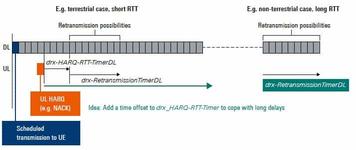
DRAM Memory: 5 Advantages and Disadvantages
Explore 5 key pros and cons of DRAM (Dynamic Random Access Memory) in computer systems, including its volatility, speed, cost-effectiveness, and limitations.
Showing 25 posts (Page 40 of 138)
Advertisement

Explore 5 key pros and cons of DRAM (Dynamic Random Access Memory) in computer systems, including its volatility, speed, cost-effectiveness, and limitations.
Explore the distinctions between DRM (Digital Radio Mondiale) and DRM+, focusing on frequencies, bandwidth, audio quality, and bit rates for digital audio broadcasting.

Explore the frequency bands used for radio control of UAV drones, including UHF SRD, ISM 2.4 GHz, and ISM 5.8 GHz. Learn about power limits and related drone resources.
Explore the essential drone sensors, including accelerometers, gyroscopes, magnetometers, barometers, GPS, and distance sensors, and their roles in navigation and stability.

Explore the basics of drone swarm systems, their functionality, applications, and the technologies driving their development for various sectors.

Explore the benefits and drawbacks of drone swarm technology, including military applications, limitations, and scalability challenges.

Learn how Discontinuous Reception (DRX) is implemented in 5G non-terrestrial networks to improve battery life and optimize link efficiency.

Explore the distinctions between dry and wet cells, focusing on their construction, applications, advantages, and disadvantages.

Compare DSBSC vs SSBSC and explore the difference between DSB-SC and SSB-SC modulation techniques including their bandwidth, power consumption and applications.
This article compares DSL and cable modems, detailing their technology, data rates, and frequency spectrum usage for internet access.

Explore the differences between DSN, DSN-less connections, and UDL, including their storage, accessibility, and usage in database interactions.

Explore the differences between DSRC and C-V2X technologies for vehicle communication, including origin, modulation, range, and deployment.

Explore the differences between DSSS and FHSS, two spread spectrum techniques used in wireless communication for enhanced robustness and security.

Explore the pros and cons of Direct Sequence Spread Spectrum (DSSS) technology, including its benefits in interference mitigation and its sensitivity in harsh environments.

Learn the key differences between Data Terminal Equipment (DTE) and Data Circuit-Terminating Equipment (DCE) in communication networks, their roles, and examples.
Explore the distinctions between DTMB and CMMB, two multimedia broadcasting technologies in China. Understand their modulation, resolution, and typical use cases.

Learn about DTMF (Dual Tone Multi Frequency) signal frequencies and their corresponding codes used in telecommunication networks. Understand the row and column representation of tones.

Understand the differences between Dual Band and Tri-Band WiFi, including benefits, frequency bands, and supported devices. Learn about Tri-Band phones.

Explore dual-band WiFi technology, how it uses 2.4 GHz and 5 GHz bands, and popular router vendors. Learn about 802.11 standards and data rates.

Explore the advantages and disadvantages of Dual Gate MOSFETs, including their applications in RF circuits and key features like improved electrostatic control.

Explore the distinctions between dual junction isolators and circulators, focusing on their enhanced isolation and applications in protecting sensitive equipment.

Explore advantages and disadvantages of dual slope ADC (Analog to Digital Converter) including its benefits and drawbacks.

Learn the difference between Digital Up Conversion (DUC) and Digital Down Conversion (DDC) modules, commonly used in Software Defined Radio (SDR) systems. Explore their key components and operations.

A comparison of duplexers, quadplexers, hexaplexers, and pentaplexers, highlighting their functions as multiplexers/de-multiplexers in RF systems.

Explore the advantages and disadvantages of RF duplexers. Learn how they allow simultaneous transmission and reception using a single antenna in various wireless systems.
Advertisement